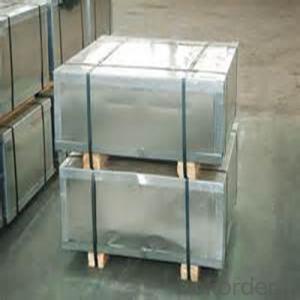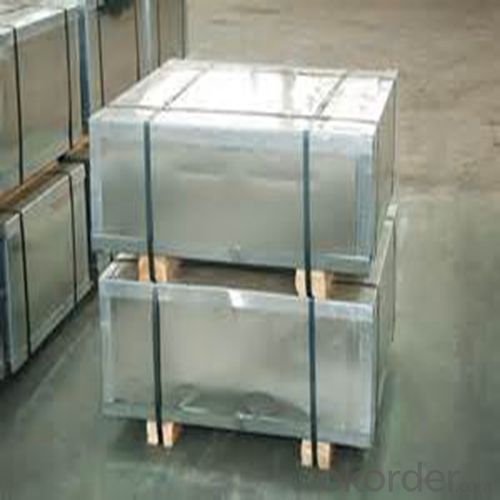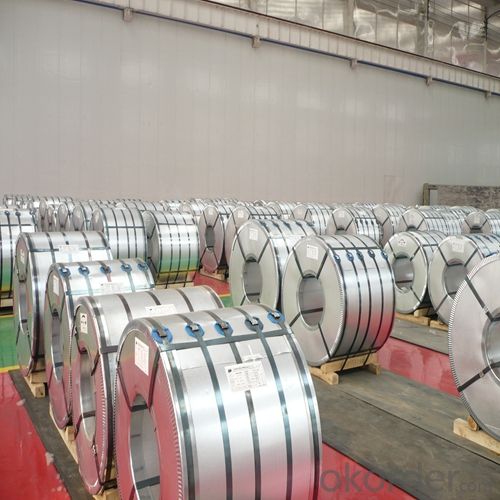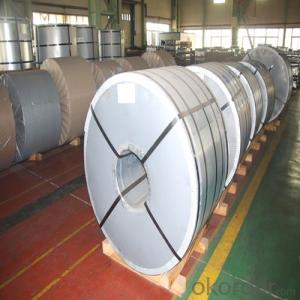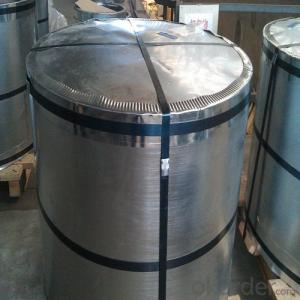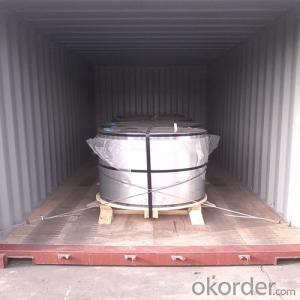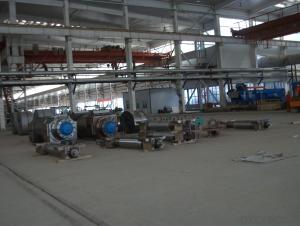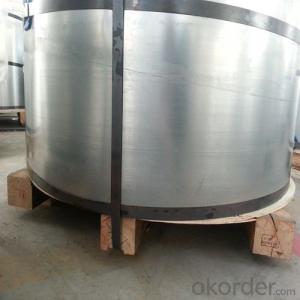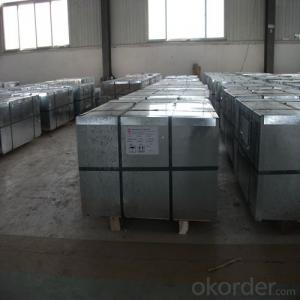Prime Quality Electrolytic Tinplate for Metal Cntainers Usage
- Loading Port:
- Shanghai
- Payment Terms:
- TT OR LC
- Min Order Qty:
- 25 m.t.
- Supply Capability:
- 15000 m.t./month
OKorder Service Pledge
OKorder Financial Service
You Might Also Like
Specification
1.Structure of Electrolytic Tinplate of Good Quality for Metal Cntainers Usage Description
Corrosion resistance – Tinplate has got good corrosion resistance. By selecting a proper coating weight, appropriate corrosion resistance is obtained against container contents. Coated items should meet 24 hour 5 % salt spray requirement.
2.Main Features of the Electrolytic Tinplate of Good Quality for Metal Cntainers Usage
Corrosion resistance – Tinplate has got good corrosion resistance. By selecting a proper coating weight, appropriate corrosion resistance is obtained against container contents. Coated items should meet 24 hour 5 % salt spray requirement.
Solderability and weldability – Tinplates can be joined both by soldering or welding. These properties of tinplate are used for making various types of cans.
Hygienic – Tin coating provides good and non toxic barrier properties to protect food products from impurities, bacteria, moisture, light and odours.
Safe – Tinplate being low weight and high strength makes food cans easy to ship and transport.
Eco friendly – Tinplate offers 100 % recyclability.
Tin is not good for low temperature applications since it changes structure and loses adhesion when exposed to temperatures below – 40 deg C.
3.Electrolytic Tinplate of Good Quality for Metal Cntainers Usage Images
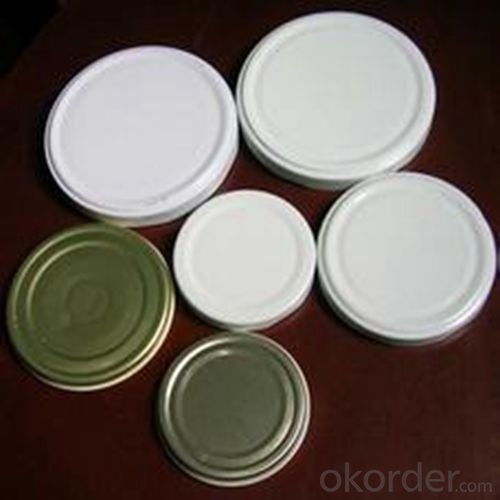
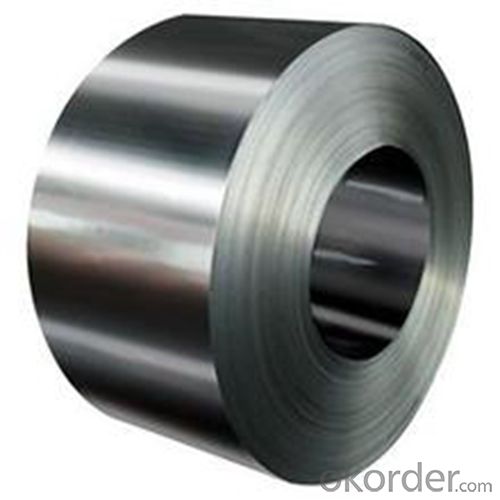
4.Electrolytic Tinplate of Good Quality for Metal Cntainers Usage Specification
Specification of :
Standard: ISO 11949 -1995, GB/T2520-2000,JIS G3303,ASTM A623, BS EN 10202
Material: MR,SPCC
Thickness:0.15mm - 0.50mm
Width: 600mm -1150mm
Temper: T1-T5
Annealing: BA & CA
Coil Inner Diameter: 508mm
Weight: 6-10 tons/coil 1~1.7 tons/sheets bundle
Passivation:311
Oil: DOS
Surface: Finish,bright,stone,matte,silver
5.FAQ of Electrolytic Tinplate of Good Quality for Metal Cntainers Usage
- What is tinning and how does it work?
Tinning is the process of thinly coating sheets of wrought iron or steel with tin, and the resulting product is known as tinplate. It is most often used to prevent rust.
- Do you only have prime quality tinplate?
We can supply both prime and second quality tinplate.
- Q: What are the main regulations governing tinplate production?
- The main regulations governing tinplate production include health and safety standards, environmental regulations, quality control measures, and labeling requirements. These regulations ensure that tinplate production processes are conducted safely, with minimal impact on the environment, and that the final product meets quality standards. Additionally, labeling requirements ensure that tinplate products are accurately labeled and provide necessary information to consumers.
- Q: How does tinplate contribute to the safety of aerospace components?
- Tinplate contributes to the safety of aerospace components by providing a protective coating that prevents corrosion and enhances durability. This ensures that critical parts, such as electrical connectors and fasteners, remain intact and function properly in demanding aerospace environments. Additionally, tinplate's low friction properties reduce wear and tear, enabling smooth movement and reducing the risk of component failure.
- Q: How does tinplate perform in terms of stackability?
- Tinplate performs exceptionally well in terms of stackability. Its rigid and durable nature allows for easy stacking without compromising the structural integrity of the stack. Additionally, the smooth surface of tinplate ensures that stacked items do not shift or slide, further enhancing its stackability.
- Q: What are the main applications of tinplate in the chemical industry?
- Tinplate is primarily used in the chemical industry for packaging purposes. It is commonly employed for the production of containers, cans, and drums used for storing various chemicals. Tinplate offers excellent corrosion resistance, ensuring the integrity and safety of the chemicals being stored. Additionally, its versatility allows for easy printing and customization of containers, making it a preferred choice for branding and labeling purposes in the chemical industry.
- Q: What's the advantage of metal containers in packing tea?
- Tin cans are internationally recognized food standards for iron packaging. Tinplate contains tin containing selenium, these are good for the human body. Print recognition is good. Good printing effect in tinplate, generally in high-grade tea can now use tin cans. It can damp and damp. Environmentally friendly, rugged and easy to carry.
- Q: How is tinplate coated for gift packaging?
- Tinplate is typically coated for gift packaging using a process called electrolytic tin coating. This involves immersing the tinplate into an electrolyte solution and passing an electric current through it, causing a thin layer of tin to be deposited onto the surface of the tinplate. This coating provides a protective barrier and enhances the appearance of the packaging, making it suitable for gift purposes.
- Q: Can tinplate be formed into complex shapes?
- Yes, tinplate can be formed into complex shapes due to its malleability and ability to be shaped through various forming processes such as deep drawing, embossing, and bending.
- Q: What are the main markets for tinplate?
- The main markets for tinplate include the packaging industry, particularly for canned food and beverages, as well as the automotive industry for various components. Tinplate is also used in the construction sector for roofing and cladding purposes.
- Q: Can tinplate be used for high-temperature applications?
- No, tinplate is not suitable for high-temperature applications as it has a low melting point and may lose its structural integrity at elevated temperatures.
- Q: What are the environmental impacts of using tinplate?
- The environmental impacts of using tinplate include deforestation due to the extraction of tin ore, air and water pollution from mining and smelting processes, and the release of greenhouse gases during production. Additionally, the disposal of tinplate products can contribute to landfill waste.
Send your message to us
Prime Quality Electrolytic Tinplate for Metal Cntainers Usage
- Loading Port:
- Shanghai
- Payment Terms:
- TT OR LC
- Min Order Qty:
- 25 m.t.
- Supply Capability:
- 15000 m.t./month
OKorder Service Pledge
OKorder Financial Service
Similar products
Hot products
Hot Searches
Related keywords
